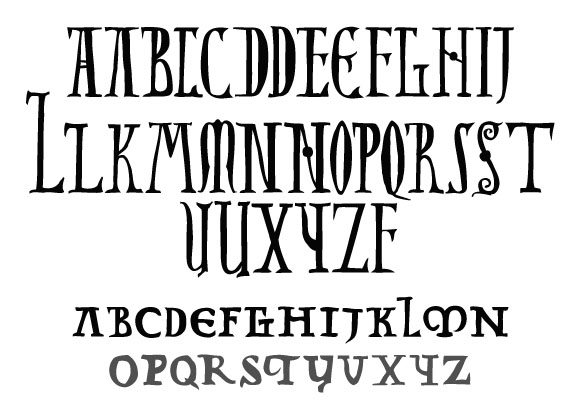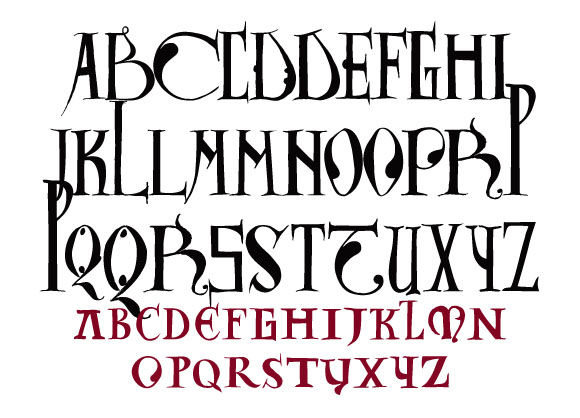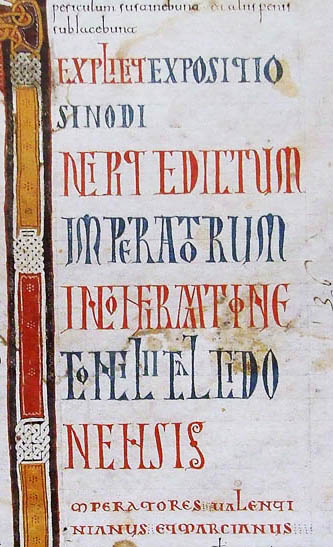
DE
German Version ¦¦ Portuguese Version
Visigothic Versals |
|
|
A true rarity! A capital-letter display script with long slender forms, mixed with round forms. This script is offered in four versions:
|
The visigothic Versal is an historic rarity. A capital letter display script with long slender forms, mixed with round forms. Visigothic script originated in the Visigothic kingdom in Hispania (today’s Spain and Portugal). The Minuscule, which exists both in book-hand and cursive versions, was used from the late 7th century until the 13th century, first in Visigothic Iberia, and then in the Christian kingdoms. In Portugal, the Visigothic versal was used in scriptoria such as the one of the Mosteiro de Santa Cruz, in Coimbra. |
|
You may buy these 4 fonts by using Paypal: 4 x Visigothic fonts = 69,00 Euros |
|
 |
|

The font Visigotica Isidoro |
|
| . | |
|
Visigothic script originated in the Visigothic kingdom in Hispania (the Iberian Peninsula, today's Spain and Portugal). The alternative designations littera toletana and littera mozarabica associate it with scriptoria specifically in Toledo and with Mozarabic culture more generally, respectively. The Minuscule, which exists both in book-hand and cursive versions, was used from approximately the late 7th century until the 13th century, first in Visigothic Iberia, and then in the Christian kingsdoms. In Portugal, it was used in the scriptorium of the Mosteiro de Santa Cruz, in Coimbra. The Visigothic script was extinct in the second half of the 12th century (1172 is the date for the last known original Portuguese document). After the extinction of the Minuscule, the Versals continued to be used, being then combined with gothic minuscules. The fonts presented here do not render the minuscule letters; they focus on the much more elegant upper case letters, Visigothic Versals, which were used as initials, in ornamental fashion or in titles and subtitles.
|
 |
|
In Spain and Portugal, the Visigoths had seized control of much of the peninsula, except for the north-west, occupied by the Suevi, and the Basque region. The Visigoths formed the new aristocracy of Spain, taking over the positions of high office, although it is estimated that they comprised no more than five percent of the total population. The laws of Alaric II helped to romanise the Visigoths. The country was unified by King Leovigild (569-586), who made Toledo his capital and struck gold coins to affirm his independence. In 584 he annexed the Suevic kingdom, while the Byzantines were largely confined to the ports in the south. |
The Byzantines were finally expelled in the 620s and Swinthila became the first Visigothic king to reign over all of Hispania. But, in the late 7th century, rivalry for power and influence among the nobility and the clergy often led to rebellion and conspiracies, which weakened the royal power. In 711, the Arabs, who had already conquered North Africa, took advantage of division of the kingdom to invade. They defeated and killed King Roderick and rapidly seized control of the Iberian peninsula. But, while some of the Visigothic nobles joined them, many others fled to Asturias in the north, where a base was established for resistance by Pelayo (leading eventually to reconquest) and where Visigothic political institutions were preserved. |